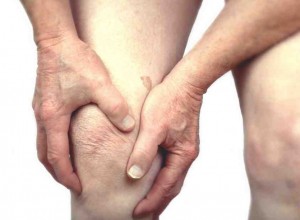February 3rd, 2017 by Dr. Val Jones in True Stories
1 Comment »
 Even though I don’t have an outpatient practice, I like to keep in touch with some of my patients after they’ve discharged from the rehab hospital. Jack is one of my very favorite success stories.
Even though I don’t have an outpatient practice, I like to keep in touch with some of my patients after they’ve discharged from the rehab hospital. Jack is one of my very favorite success stories.
I met Jack in a small regional hospital in rural western America. He had been admitted with sudden onset weakness, and during the intake process, accurately described his daily evening cocktail habit. Unfortunately, this led the clinicians down the wrong diagnostic pathway, presuming that alcohol withdrawal seizures were the cause of his weakness (due to a presumed “post-ictal” state).
A brain MRI was unremarkable, and so a fairly high loading dose of anti-seizure medications were started. Poor Jack happened to be very sensitive to meds, and reacted with frank psychosis. Days later he was still not in his right mind, and so a rehab consult was requested for “encephalopathy due to alcohol withdrawal.”
When I met Jack, it was clear on first glance that… [click here to read the rest of the story] or go to this link:
http://cliniciantoday.com/when-its-more-important-to-save-a-lifestyle-than-a-life/
August 4th, 2016 by Dr. Val Jones in True Stories
1 Comment »
As the new medical director of admissions for St. Luke’s Rehabilitation Institute in Spokane, Washington, it is my job to review all patient referrals to our hospital. Imagine my astonishment when, while traveling to New Orleans, I received an email about a patient at Tulane Medical Center who was requesting admission to St. Luke’s. This dear lady was from Spokane, but had fallen ill while visiting her family on the other side of the country, in Louisiana.
I quickly discovered via Google Maps that she was in a hospital bed only three blocks from my hotel room. I called the case manager and nurse at Tulane and asked if it was OK for me to stop by the patient’s room for an interview. They were surprised to hear that a consult physician from Washington was going to meet their patient in person, but thought it would be fine.
When I arrived, the patient’s son greeted me. He was pacing the halls, worrying about how he was going to get his mom home. There was only one direct flight per week, and it was scheduled for the next day. He had booked the ticket on Southwest Airlines on a lark.
I explained that I was from St. Luke’s, the facility that he hoped would admit his mom for further care.
He was dumbfounded. “What are you doing in New Orleans?” he asked.
“I’m here on a business trip,” I said, “and I heard your mom needed rehab. I wanted to look in on her and make sure she’s ready to transfer home. I reviewed her chart and she seems to be a perfect candidate.”
He smiled and sputtered that he thought the case managers had just sent out the referral request a few hours prior. “How on earth did you get here so quickly?” he marveled.
I explained that email and digital chart access make a big difference these days and reassured him that his mom would likely be able to catch her flight the next morning.
As I entered the patient’s room, I introduced myself as a doctor from St. Luke’s in Spokane, who had come to see if she was ready for admission. She looked at me with bright, quizzical eyes.
“I thought this was going to take weeks,” she said. “I was in such a state. I prayed that God would find a way to get me home just a few hours ago, and now you’re here. This must be divine intervention.”
I smiled and briefly examined her, noting a PICC line and Foley catheter. She wrote me a list of “must eats” in New Orleans and explained where I could find the best fried oysters and po’boy sandwiches. Her attending physician then came in, accompanied by a medical resident. The resident explained that I was here from the accepting facility in Washington state.
“This never happens,” the attending stated, matter-of-factly.
“It’s a crazy coincidence. I am the admissions director, and I happened to be three blocks from here when I received an email about this patient,” I said. “I reviewed a copy of your medical records and believe she is an excellent rehab candidate. Because I was right around the corner, I figured I’d facilitate her transfer in person. It’d be great if we could leave her lines and tubes in for the trip. … I’d like to give you my card, in case you have other patients who need rehab in Spokane.”
The attending chuckled as she looked at my business card. “I’m not sure how many others we’ll be sending your way.”
“You never know.”

Dr. Val Jones and patient Patricia Crocker-Fox in Spokane, WA.
The patient transferred to St. Luke’s the very next morning, arriving before I did. She made an excellent recovery, and after three weeks of hard work, she was able to stand and walk again.
She gave me permission to write about this amazing journey, and I had a hospital friend take a photo of us together on her final day at St. Luke’s, next to a full-scale replica of the same Southwest Airlines airplane in which she traveled to us from New Orleans. We use it in our gym to help patients with injuries and disabilities practice getting in and out of airplanes. Southwest Airlines donated it to us some time ago — yet another coincidence!
Stories like these make me glad to be a physician. I love knowing that I may be called upon at any time — wherever I am — to help people in extraordinary ways.
And yes, I did gain about five pounds on my trip. What can I say? I simply had to take my patient’s advice on Cajun delicacies before I flew home!
**This post was originally published on the Barton Associates Blog.**
June 27th, 2016 by Dr. Val Jones in Health Policy, Opinion
1 Comment »
 Most hospitals have slim margins, and budgets are set based on anticipated average patient reimbursement at Medicare rates. Some private insurers pay higher rates than Medicare, and the differential is often used to offset the cost of treating Medicaid patients. Medicaid reimburses at about half what Medicare pays, which is usually not enough to break even. Out of financial necessity, Medicaid patients are often given limited access to care and services. This is done in some subtle and some not-so-subtle ways. In a recent conversation with an orthopedist friend of mine, he confided in me candidly:
Most hospitals have slim margins, and budgets are set based on anticipated average patient reimbursement at Medicare rates. Some private insurers pay higher rates than Medicare, and the differential is often used to offset the cost of treating Medicaid patients. Medicaid reimburses at about half what Medicare pays, which is usually not enough to break even. Out of financial necessity, Medicaid patients are often given limited access to care and services. This is done in some subtle and some not-so-subtle ways. In a recent conversation with an orthopedist friend of mine, he confided in me candidly:
“Some of my colleagues in private practice can’t pay their office overhead if they treat Medicaid patients. So we see poor people with severely arthritic joints left in pain at home. In addition, with bundled payments, the surgeon gets a fixed amount for the patient’s operation and recovery. What incentive is there to send the patient to a rehab facility? It just takes money away from the surgeon. So the poor have to suffer with very long wait times to see someone who will operate on them, and then afterwards they’re on their own for recovery. Patients who go straight home are at higher risk of falling and may have much poorer outcomes. Surgeons get financial incentives for good outcomes, so it becomes a double disincentive to treat Medicaid patients. You don’t get enough for the operation, and you’re likely to get penalized for their poorer outcomes. Some surgeons I know wont touch a patient with Medicaid for any elective procedure. I have ethical problems with that – so I work at a non-profit hospital where we treat everyone. But I have to do higher volume to break even. I work 90 hours a week and barely see my family. I don’t know how much longer I can do it.”
It is common practice among nursing homes to have a limited number of “Medicaid beds.” The facility simply declines to admit more than 20% of patients with Medicaid. I hear case managers on the phone all day long, looking for a post-acute care facility who will accept a Medicaid patient. For the few non-profit facilities who don’t turn them away, deep financial costs are incurred as they struggle for survival.
The reality is that Medicaid rates are so low that having this insurance is not much better than none at all. As I’ve explained previously in the outpatient world (see an example of an insanely low Medicaid reimbursement for eye care), Medicaid is tantamount to charity care. The news that 21.3 million Americans might receive Medicaid coverage in the next decade should not be hailed as a leap forward. As I see it, that’s just a larger group of people with debilitating arthritis who can’t get hip and knee replacements and are left to suffer in pain at home.
May 31st, 2016 by Dr. Val Jones in Health Tips
3 Comments »
 *This post was initially published on the Barton Blog.
*This post was initially published on the Barton Blog.
I have been working locum tenens assignments for over five years, and I’m enjoying it even more now than I did in the beginning. This is probably because experience has taught me how to handle the variety of challenges and unknowns that are a part of the job. Excelling in these environments leads to more assignment opportunities, meaningful professional relationships, and repeat business. If you’re interested in honing your locums skills, here’s how to do it:
1. Be prepared
Before traveling to your assignment, prepare a clipboard that will contain all the key information you will need while on assignment. This should include:
- Your state license number, DEA number, and NPI number
- Your login and passwords (you may receive them in advance or on day one of your assignment).
- Common CPT and ICD-10 codes
- A blank org chart that you can fill in with names of your supervisor and other key personnel. (E.g. Chief of Staff, Nursing supervisor, Medical Records, Admissions Coordinator, Risk Management, etc.)
- Frequently called phone numbers (e.g. pharmacy, lab, hospitalist service, etc.)
You can do this with a tablet or smartphone if you prefer, but I find that most hospitals still prepare paper handouts for me during orientation – so an “old school” clipboard works well.
2. Dress professionally
They say you never get a second chance to make a good first impression. I find that scrubs and a white coat are clean, professional, and easy to travel with. It’s hard to know what the dress style will be at your assignment, but no one complains about a doctor in scrubs and a white coat. Scrubs are comfortable, and coats have plenty of pocket space for equipment. If you feel more comfortable in dress shirts and slacks, that’s fine too. Just remember that you may have long days and be on your feet for many hours, so plan accordingly. Footwear can make or break you!
3. Be tech savvy
It’s difficult to acclimate to new hospital documentation processes, but do your best to do so quickly and without complaining. You may not like the EMR at your assignment, but it’s not going to change, so you may as well dig in and figure out how to make it work for you. Do your EMR training in advance if possible. Plan to be able to compose your documentation on day one. Standing out as a locums often hinges on your ability to adapt to technology quickly.
4. Work hard
Although many locum assignments are short term, it’s still important to work just as hard as if it were a permanent position. Plan to carry the same census as your peers and work about the same hours. You will certainly stand out if you show that you are pulling your weight and are a valuable member of the team. Schedule assignments with facilities in advance and don’t cancel them within a 30-day window.
5. Document thoroughly
If you want to be invited back repeatedly to a facility, make sure you document thoroughly and accurately so that they can bill for your services. Provide them with CPT codes on a daily basis, and make sure you have signed all your charting. If you are off site and medical records call you to complete some documentation, do so quickly and without complaint. They will be grateful!
6. Develop staff rapport
It’s important to treat everyone with respect. Attend team meetings. Listen well. Avoid the attitude of “I don’t need to learn about this because I’m only here for a short time.” People will remember your attentiveness. Offer your cell phone number to the staff so they can get in touch with you at all times.
7. Be humble
When providers first arrive at an assignment, the natural tendency is to want to change everything to suit their own way of doing things. Resist that urge, and try to adapt to the way things are run. Every facility has its own personality and has developed a working routine. Observe it carefully before making suggestions for changing it. If you see someone doing a good job, be sure to praise them for it.
8. Be clean
Keep a tidy office space. Don’t clutter up common areas, leave old food in the staff fridge, or leave private patient information lying around. You don’t want a facility’s last memory of you to be the rotten egg salad with your name on it!
9. Have a sense of humor
When you’re the new guy/gal you’re bound to make mistakes, forget names, get lost, miss meetings, etc. Instead of being frustrated, just take it in stride and laugh at yourself and the situation. Apologize often, learn from your mistakes, and thank staff for helping you to stay on track.
10. Provide excellent patient care
In the end, the most important thing is that patients get good care. Be thorough, evidence-based, and compassionate. Engage in patient and staff education, citing medical literature as appropriate. Listen to your patients, and engage their families in their care.
If you keep these 10 tips in mind as you prepare for your next locums assignment, I have no doubt that you’ll stand out as the kind of provider everyone wants around!
May 24th, 2016 by Dr. Val Jones in True Stories
No Comments »
 *This post was initially published on the Barton Blog.
*This post was initially published on the Barton Blog.
As a locum tenens physician in rehabilitation hospitals, I see patients with some of the most unique injuries. From rare brain infections contracted in exotic lands, to the consequences of ill-advised horseplay with guns or ATVs – I’d begun to wonder if maybe I’d seen it all.
And then I met a grandma from New Jersey, who had a life-changing encounter on a nature trail out west. In her dutiful effort to corral her teenage grandchildren, and keep them following the guide’s directions, she shouted for them to remain on the path. In so doing, her yelling attracted the attention of an ill-tempered bison. The animal rapidly approached from behind without her notice. In the blink of an eye, the bison threw her up in the air with a flick of its horned head.
“As a locum tenens physician in rehabilitation hospitals, I see patients with some of the most unique injuries.”
As she crashed to the ground, she rose up again instinctively (to dust herself off and prepare to run) as the animal came back for a second hit. One of its horns sliced a huge gash in her buttock as she fell head first on the ground, causing brain bleeding. The guide managed to scare off the beast as my patient’s granddaughter had the presence of mind to staunch her bleeding wound by having her sit on her thigh, as the guide called in an air flight to my hospital.
After stabilization in the ICU and several surgeries to correct the gashes, my patient arrived in the rehab unit with a traumatic brain injury. She was quite disoriented, her pain was poorly controlled, and even the slightest noises were very disturbing to her. She had flashbacks of the event and would call out in fear during her fitful sleep.
With careful therapy, low stimulus environment, and better pain management, I began to see glimpses of my patient’s usual brilliance and keen sense of humor. She was determined to improve, and participated eagerly in the full gamut of activities, including focused attention tasks and balance and agility tests.
One weekend I was eating at a local restaurant and noticed bison carpaccio on the menu. I couldn’t resist the opportunity to “get even” for my patient. I ordered the dish and took a photo with my smart phone. On Monday I showed her the image – and told her I had evened the score. Her face lit up from ear to ear. She told me to keep eating buffalo for the rest of my days!
 Even though I don’t have an outpatient practice, I like to keep in touch with some of my patients after they’ve discharged from the rehab hospital. Jack is one of my very favorite success stories.
Even though I don’t have an outpatient practice, I like to keep in touch with some of my patients after they’ve discharged from the rehab hospital. Jack is one of my very favorite success stories.


 Dr. Val Jones and patient Patricia Crocker-Fox in Spokane, WA.
Dr. Val Jones and patient Patricia Crocker-Fox in Spokane, WA.
 Most hospitals have slim margins, and budgets are set based on anticipated average patient reimbursement at Medicare rates. Some private insurers pay higher rates than Medicare, and the differential is often used to offset the cost of treating Medicaid patients. Medicaid reimburses at about half what Medicare pays, which is usually not enough to break even. Out of financial necessity, Medicaid patients are often given limited access to care and services. This is done in some subtle and some not-so-subtle ways. In a recent conversation with an orthopedist friend of mine, he confided in me candidly:
Most hospitals have slim margins, and budgets are set based on anticipated average patient reimbursement at Medicare rates. Some private insurers pay higher rates than Medicare, and the differential is often used to offset the cost of treating Medicaid patients. Medicaid reimburses at about half what Medicare pays, which is usually not enough to break even. Out of financial necessity, Medicaid patients are often given limited access to care and services. This is done in some subtle and some not-so-subtle ways. In a recent conversation with an orthopedist friend of mine, he confided in me candidly:
 *This post was initially published on the
*This post was initially published on the 







